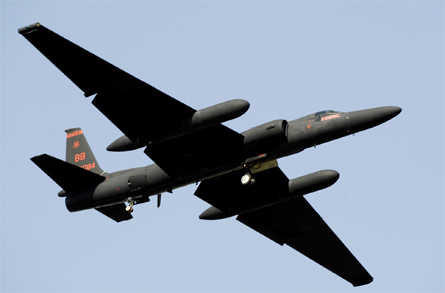Goodrich is set to achieve a rare treble with three versions of the same sensor technology achieving key milestones in orbit, high-altitude and medium-altitude zones within weeks of each other.
On 29 March, the company announced a new contract from the US Air Force to deliver two upgraded senior year electro-optical reconnaissance systems 2A (Syers-2A) payloads for the Lockheed Martin U-2.
The announcement comes a few weeks before the launch of the operationally responsive spacecraft-1 carrying a payload derived from Syers-2, and a few weeks after Northrop Grumman announced integrating the MS-177 sensor, which is derived from the Syers-3, on its E-8C JSTARS surveillance aircraft.
 |
|---|
© Staff Sgt Brian Ferguson/US Air Force |
The Syers payload originally designed for the U-2 (above) by Itek Optical, which was acquired by Goodrich, has been in high demand since US Secretary of Defense Robert Gates placed an emphasis on intelligence, surveillance and reconnaissance capabilities starting in 2008.
The multi-spectral sensor captures imagery in seven different bands of the electromagnetic spectrum, making it possible to detect changes in landscapes or buildings not visible to the human eye. In short-wave frequencies, the sensor can see through atmospheric obstacles, including dust, haze and fog.
According to Northrop, the 226kg (500lb) MS-177 sensor has been integrated in a keel beam accessory bay of the E-8C (below), allowing JSTARS operators to visually identify targets after detecting them with the aircraft's APY-7 ground moving target indicator payload.
 |
|---|
© via US Air Force |
The sensor integration is part of a demonstration programme as the USAF continues to analyse alternatives to the E-8C, including a proposed ground surveillance variant of the Boeing P-8A Poseidon maritime patrol aircraft.
Sign up to get a free download of Flightglobal Insight's Airborne Imaging 2011 special report
Source: Flight International


























